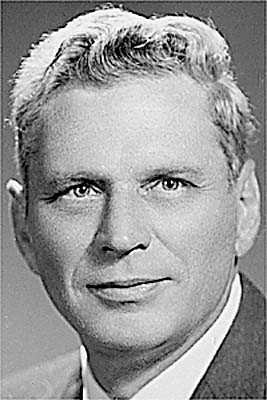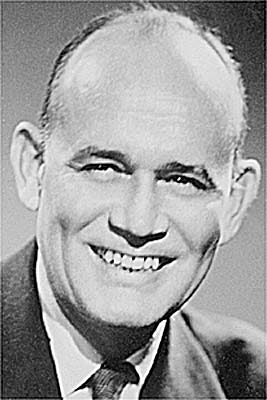A web site full of stuff that should be useful
| AS Psychology |
| Core Studies |
| Links |
| Course Content |
| Exam Questions |
| Psychological Investigation |
| Forum |
| Glossary |
| About this site |
|
If you haven't seen the film 'The Three Faces of Eve' you can buy this Hollywood interpretation from Amazon.
|
![]()
The Thigpen and Cleckley Page
|
Below is a very brief summary of the Thigpen and Cleckley study. You will need to use the more detailed summary here to revise for the exam. You can also find all of the past exam questions on Thigpen and Cleckley's study here. www.uniview.co.uk have for sale a video called Case Study of Personality which includes original footage of this study. I haven't seen it yet (hint) but I am sure it is good.
|
Corbett Thigpen |
|
Hervey Cleckley |
A good link here to a very short biography of Thigpen and Cleckley The iconic siouxsie sioux recorded a song called Christine (eve's real name) which was inspired by this case. The lyrics (and sometimes the song) are here. Oh and even better - here is the video on you tube.
|
|
The aim
of this case study was to provide an account of the treatment of a
25-year-old woman who was referred to Thigpen and Cleckley because of
'severe and blinding headaches'. The psychiatrists used
a case study method. This consisted of interviews with the patient and her
family, hypnosis, observation, EEG tests and a number of psychometric and
projective tests including, memory tests, ink blot tests and intelligence
tests. The patient (referred to as Eve White in the study) had been referred for therapy to one of the authors because of ‘severe and blinding headaches’. At the first interview she also complained of ‘‘blackouts’’ following her headaches However they were puzzled that Eve White had no memory of a recent trip. The therapists used hypnosis and the amnesia was cleared. Several days after a
visit to the therapists, a letter from Eve White appeared at the therapists’
office. The letter concerned her therapy and was written in her usual
handwriting, but at the bottom of the page there was a paragraph that looked
like a child had written it. On her next visit Eve White denied sending the letter, though she recalled having begun one, which she never finished and thought she had destroyed. During the interview, Eve White who was normally very self-controlled became distressed and asked whether hearing an occasional imaginary voice made her insane. She reported that she had on several occasions over the last few months briefly heard a voice addressing her. During this conversation Eve White, as if in pain suddenly put both hands to her head. After a tense moment of silence her hands dropped, and the therapist observed a ‘quick, reckless smile’ and in a bright voice she said: ‘Hi there, Doc’! To the therapist it seemed that the usually conventional and retiring Eve White had changed into a carefree person. She also seemed to have a very different physical presence in terms of manner, gestures, and eye movements. When asked her name she immediately replied that she was Eve Black. The therapist noted that this new person ‘had a childish daredevil air, an erotically mischievous glance, a face marvellously free from the habitual signs of care, seriousness and underlying distress’. The voice and language structure were also very different, and to the therapist it appeared to be an entirely different woman. Over the next 14 months, during a series of interviews totalling approximately 100 hours, extensive material was obtained about the behaviour and experience of Eve White and Eve Black. The therapists believed that Eve Black had enjoyed an independent life since Eve’s early childhood and when she was ‘out’ Eve White was not aware of what was happening. In contrast, when Eve Black was not out she was aware of what was happening. According to the therapists, Eve Black’s behaviour was ‘characterised by irresponsibility and a shallowly hedonistic desire for excitement and pleasure’. She succeeded in concealing her identity not only from Eve White, but also from her parents and husband. Eve Black denied marriage to the man, who she despised, and denied any relationship to Eve White’s daughter except that of an unconcerned bystander. To her husband, daughter and parents her unpleasant behaviour, harshness and occasional acts of violence were explained in terms of ‘unaccountable fits of temper in a woman who was habitually gentle and considerate’. Both personalities were given a series of psychometric (i.e. IQ and memory tests) and projective tests (i.e. Rorschach and drawings of human figures) by an independent expert with the following results: IQ test results: Eve White obtained an IQ of 110 and Eve Black 104.
Memory Test results: Eve White had a
superior memory function than Eve Black Rorschach test (ink blot test) and drawings of human figures results: The profile of Eve Black was far healthier than Eve White. Eve Black though was regressive whilst Eve White was repressive showing obsessive-compulsive traits, rigidity and an inability to deal with her hostility. As Eve White became
aware of Eve Black’s existence through the therapy, she became able to
prevent her ‘getting out’ on occasions, and so negotiation was necessary for
Eve Black to get more time ‘out’. After eight months of treatment Eve
White seemed to be making progress. Her ‘blackouts’ had ceased and she was
working well at her job (as a telephone operator) and ‘was reaching some
acceptable solution to her marital problems’. However as the treatment progressed, Eve White’s headaches returned and so did the ‘blackouts’. Eve Black denied all responsibility and said that she also experienced lack of awareness during these ‘blackouts’. Eve White’s general state of mind was deteriorating and confinement was considered. It became easier for the therapist to call up whichever personality he wanted to examine, and childhood experiences were investigated under hypnosis. During one such episode, Eve White appeared to relax into a sleepy state. ‘After two minutes, her eyes opened, blankly staring about the room trying to orient herself. When her eyes finally met those of the therapist, slowly, with an unknown husky voice and immeasurable poise, she said, ‘Who are you?’ The therapists believed
that another personality had emerged who called herself Jane. The other
personality, they argued, was more responsible than Eve Black and more
confident and interesting than Eve White. After Jane appeared the three personalities were given electroencephalogram tests (EEG). It was possible to make a clear distinction between the readings of Eve Black and the other two personalities. Although it was not possible make a clear distinction between Eve White and Jane’s EEG. Having been able to
work with the three personalities for several months the therapists
concluded that if Jane could take possession of the personalities the
patient would regain full health and find her way to a happy life. Jane had
awareness of both Eves’ thoughts and behaviour but did not have complete
access to their memories prior to her appearance. Jane had learnt to take
over many of Eve White’s tasks at home and work to help Eve White and showed
compassion to Eve White’s daughter. However, although the therapists could
work with Jane to determine whether Eve Black had been lying, Jane had not
found a way to displace Eve Black, or to communicate through her. |
|


